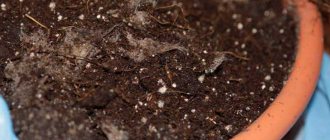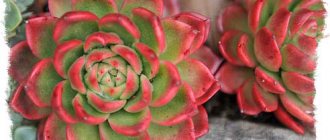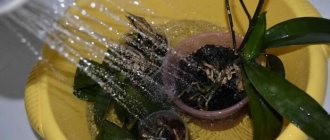Spider mite
Spider mites are common everywhere except Antarctica. It affects crops both in open and protected ground.
This is a small arthropod sucking insect measuring no more than 1 mm. The pest has a soft, ellipsoidal body with a convex upper part and a flat lower part.
At different stages of development, the tick has its own coloration . Transparent larvae are light green or brown with dark spots on the sides. The body of an adult insect has an orange-red, bright red, yellow, and green tint. They, unlike six-legged larvae, always have 8 legs.
Origin of the species and description
Photo: Spider mite
Spider mites belong to the phylum arthropods, class arachnids, subclass mites. These are very small (0.2-1 mm) arthropods that feed on plants. Their sexual dimorphism is well expressed: females are significantly larger than males and have a more rounded body; males are correspondingly smaller and have a more elongated body.
The appearance of adult individuals is characterized by a solid body structure. Their body, unlike larvae and nymphs, is only conditionally segmented, and traces of dismemberment are noticeable only in the arrangement of the setae (Hittites). The bristles perform a tactile function and are arranged in transverse rows. They are very diverse in their shape, depending on where they are located (on the crown, on the back, on the lower back, on the sacrum, on the tail).
Video: Spider mite
There are several types of spider mites:
- ordinary - affects almost all types of plants;
- red - feeds on all nightshade crops, as well as citrus fruits;
- hawthorn - lives on fruit trees, both stone fruit and pomaceous (plum, cherry, sweet cherry, peach, sloe, apple, pear, hawthorn);
- Turkestan - a polyphagous parasite that attacks leguminous plants, stone fruit and pome fruit trees;
- cyclamen - lives only indoors or greenhouses, you will not find it on the street; settles on cyclamen, geranium, chrysanthemum, gloxinia, balsam;
- gall - prefers to settle on young leaves, in the process of its life activity it forms peculiar warts (galls) on them;
- root (bulb) - lives inside flower bulbs, feeding on their tissues;
- wide - prefers to settle on citrus fruits, cacti, ficus, Saintpaulia, aucuba;
- false - lives only in greenhouses, very small (0.3 mm), does not spin webs.
Interesting fact: Recently, scientists discovered several species of ticks of the superfamily Tetranychoidea, and among them no males were found.
Harm to plants
Where does it come from on plants? Quite a logical question! How do spider mites get into houses, greenhouses, outdoor front gardens and beds? There are many ways of entry.
It can be brought into homes with newly acquired plants purchased to replenish the collection.
Therefore, it is recommended to first keep all new specimens in quarantine.
In addition, ticks can be brought into apartments and other enclosed spaces on clothing or accessories, such as bags and umbrellas.
They can be on bouquets of flowers. And it can easily be carried by the wind . In open areas, the mite may appear, carried by air flow, with seedlings or seedlings purchased at the market or in a store.
Where can it be found? This pest is capable of attacking most existing plants . It settles in the garden, in flower beds, on vegetable crops and fruit bushes, and can attack indoor flowers. Of course, he has his own preferences. What plants does it affect?
Indoor flowers
Spider mites do not really like pubescent leaves , so they practically never occur on violets (Saintpaulias), gloxinias, kolerias and calceolarias.
Moreover, some gardeners try to get rid of the pest by placing Saintpaulias near the affected flowers. These vegetarians also cannot tolerate aloe and never grow on it. But ticks just love:
- ficus;
- fuchsia;
- palm trees;
- callas;
- azaleas;
- shefler;
- balsams;
- abutilone;
- ivies;
- sicndapsus;
- syngonium.
However, do not think that the mite will bypass other plants! Almost all flowers can be attacked . Find out more in the article “How to deal with spider mites on indoor plants at home?”
Outdoor plants
It’s easier to say what spider mites don’t like, because the list of their preferences is almost impossible to describe. The pest will never settle on:
- calendula (marigold);
- marigolds;
- dandelions;
- cyclomene.
Moreover, ticks can be repelled from plants by planting these flowers between them. After all, these pests cannot stand their smell at all . Details in the article “Spider mites: treatment of roses, apple trees, marijuana and other plants.”
Fruit crops
Only the elderberry can be saved. Mites really love , especially strawberries and wild strawberries. “The fight against spider mites on berries” is described in detail in the article on our website.
Garden vegetables
In the affected crops, there is not a single variety of onion, and even garlic . In addition, these plants are often used against mites, as described in detail in the article “Fighting spider mites on vegetables.” But cucumbers, eggplants, and peppers are the favorites of gourmet ticks.
In the article “Fighting spider mites on cucumbers” you will learn how to effectively destroy the pest and prevent it from appearing again.
Medicinal herbs and spices
There are relatively few food plants for ticks here. Mint and lemon balm are at greatest risk . But many herbs help get rid of the pest.
It will never settle on chamomile, mustard, parsley, basil, tansy, celandine, yarrow and all types of wormwood.
In addition to these plants, spider mites can be found on different varieties of grapes, legumes and grain crops, and forest plants, including trees. According to scientific classification, spider mites are polyphagous pests .
Appearance and features
Photo: What a spider mite looks like
The entire body of the spider mite is enclosed in a structured thin or more dense cuticle with folds, points or tubercles. Covers of a denser cuticle can form peculiar shields. The body color of ticks, depending on their species, can be translucent, yellow-green, orange, bright red. Regardless of the color of the body, its internal organs are always visible through the outer covering of the insect in the form of a darker spot.
Adult ticks and nymphs have four pairs of thin legs, while larvae have only three. At the ends of their legs they have complex claw-shaped devices. With their help, mites cling tightly to stems and leaves. The genital organs of female ticks are located on the abdomen, while those of males are located in the back of the body. The mouthparts of these insects are of the piercing-sucking type and are well adapted for quickly piercing the skin of plants and sucking up the secreted juice.
The gland responsible for the production of the web is located on the head (only in females and nymphs) and is located inside short segments (pedipalps), which are fused during the process of evolution. On the second body segment from the head, ticks have four simple red eyes that react exclusively to short waves of the light spectrum.
Now you know what measures are available to combat spider mites. Let's see where this insect lives.
Specialty chemicals
Without the use of chemicals, it will not be possible to completely remove pests. Modern acaricidal preparations are designed for use in closed spaces. An effective method of combating spider mites is to spray with chemical compounds and treat the soil in a pot with them. Recommended products include:
Fitoverm
Plant-based bio-insecticide Fitoverm can be used at home without fear. It is recommended for the prevention and destruction of pests on indoor plants. The effect of the product begins 6-7 hours after application. The period of protective action is 2-3 weeks. An ampoule of the drug (2 ml) must be placed in 1 liter of water, and the prepared mixture should be intensively sprayed onto the infected plants.
Aktara
A modern acaricidal drug is used not only in the garden, but also to destroy pests on flowers - roses, violets, ficus and others. The product is offered in the form of a concentrated emulsion and water-soluble granules. Small packaging in ampoules and bags is convenient for processing house plants. Aktara against spider mites is a systemic drug. It penetrates the leaves and tissues of plants, sucking the juice from them, and the pests receive a dose of poison.
An hour after the insecticide enters their body, phytophages lose the ability to feed and die within 24 hours. The effect of the drug, when applied to the soil, protects indoor plants for 2 months. When spraying, use a fresh solution. When working with a toxic substance, you should be careful - wear gloves, wash your face and hands after work, and change clothes.
Plant Pin
Sticks with the active ingredient butoxycarboxim. A no-spray remedy for spider mites on houseplants. The number of sticks depends on the diameter of the pot - 9 cm - 1, 12 cm - 2, 20 cm - 5-6. They are stuck into the ground at a distance of 2 cm from the plant. During watering, the active substance dissolves and enters the roots of the flower. The effect of the drug is observed after 3-7 days. It will protect against the pest for 8 weeks. Etisso has a similar effect.
Where do spider mites live?
Photo: Spider mite in Russia
Spider mites can be found everywhere except Antarctica. After all, the boundaries of their habitat are limited not by climatic zones, but by the average annual temperature, which is plus 4.5°C. More than a hundred species of these insects have been described in Russia alone. When periodic outbreaks of population growth occur, ticks can migrate over quite long distances in search of food. The wind often helps them with this. Hungry mites crawl out to the edges of the leaves and form moving, living balls that are picked up by the wind.
Spider mites are most active in warm and dry weather. During rain and even with a slight increase in humidity, they become inhibited. The thing is that the excretory system of arthropods does not provide for the removal of excess fluid that enters their body with food. Because of this, they stop eating and reproducing, due to the so-called physiological starvation.
In autumn, when the length of daylight hours decreases to 16 hours, most fertilized female spider mites burrow into the ground and enter a special state - diapause. At this time, all their life processes slow down. Since they do not move and do not eat anything, they consume 5 times less oxygen. During this time, the tick's body becomes resistant to sudden temperature changes, excess moisture, and the effects of insecticides.
What does a spider mite eat?
Photo: Spider mite on a plant
The menu of spider mites consists of the cell sap of various plants. Most often they attack young plants, although in case of acute deficiency (especially at the end of summer or early autumn) they do not disdain older ones. At the tips of their legs, mites have special pointed claws that make many holes on the back of the leaves. Cell sap flows out of these holes, which insects absorb with their mouthparts.
The salivary glands of ticks contain a special aggressive enzyme that destroys chloroplasts (green cells) of plants and partially digests their food. Most often, these arthropods feed on the sap of various grasses and deciduous trees, but occasionally there are lovers of coniferous flora.
Some types of spider mites are polyphagous, that is, they can feed on many types of plants, others are oligophagous (a limited number of plant species, for example, within one family - nightshade, legume, melon, geranium, etc.); still others are monophagous (they live on only one type of plant).
Particularly susceptible to attacks by spider mites:
- cotton;
- melons;
- fruit trees;
- ornamental herbaceous plants in greenhouses, on window sills, in open ground.
Definition of lesion
This is what the affected plant looks like - photo:
The most obvious and characteristic sign is the presence of a thin cobweb entwining the plant on all sides. It is located on stems, leaves and flowers.
Leaves and flower petals acquire specific marks - they are “decorated” by multiple pinhole punctures. They look like tiny light specks. In fact, these are necrotic foci formed as a result of the harmful activity of mites. These dots gradually grow and begin to merge, forming a large dried area.
The plant loses its decorative and healthy appearance. Leaf blades begin to curl in an unnatural way and fall off in large quantities. In bright light, silvery stripes and spots can be seen on the leaves - mite secretions.
What damage does spider mites cause to plants? By feeding on plant sap, the mite damages the cells that make up the leaves. As a result, the intensity of photosynthesis processes decreases, which leads to a decrease in the amount of useful nutrients .
Lack of nutrition affects the weakening of defenses and susceptibility to various diseases . Some of them are brought by the tick itself, which is a carrier of gray mold and many viral diseases.
Attacks on ornamental plants reduce their beauty and often lead to death . Garden, berry, fruit and grain crops suffer losses in the quality and quantity of the harvest. They can reach from 30 to 70% of the total volume.
Features of character and lifestyle
Photo: Spider mites in the garden
Despite their almost microscopic size, spider mites are truly dangerous pests of both wild and cultivated plants. In a short time they can harm not only home collections of plants, but also large nurseries that are engaged in the industrial cultivation of flowers. Juvenile ticks have three pairs of legs. After two molts, they acquire another pair and become adults - adults. Females live on average from 5 to 40 days.
The most comfortable temperature for the life and development of spider mites is from plus 25-30°C. At this time, their complete development (from egg to adult) takes 7-8 days. When the temperature drops, the development process occurs in 28-32 days. Spider mites typically live on the underside of leaves. There he makes many small holes and sucks out the juice.
Leaves damaged in this way become dehydrated, wither and dry out. Even a minor infestation by these pests can significantly affect the development of a plant. Indeed, with a prolonged attack by mites, the plant’s ability to photosynthesize decreases significantly. And without this important process, plants weaken and may even die.
When daylight hours decrease to 14 hours, only overwintering female pests can develop. Thanks to diapause, they can easily tolerate temperatures dropping to minus 28°C. In spring, when the air temperature rises to plus 12-14°C, female mites wake up, crawl out of the soil and settle on the back of plant leaves, abundantly entwining them with cobwebs.
They also lay eggs here, since they left for the winter already fertilized. The very first thing is that the spring offspring of spider mites develop on quinoa, nettle, and plantain. By mid-July, arthropods gradually move onto cultivated plants.
Social structure and reproduction
Photo: Spider mite insect
Spider mites reproduce only under favorable conditions - air temperature above plus 25°C and low humidity (no more than 40%). When the temperature drops and humidity increases, ticks tend (though not always) to enter a short-term diapause or become very lethargic and inhibited. In the tropics and greenhouses, their reproduction can occur continuously throughout the year.
Interesting fact: In 12 months, spider mites can breed up to 20 times.
Fertilization in spider mites occurs without depositing capsules with seminal fluid, but by penetration of the male genital organ into a special hole on the female’s abdomen. Occasionally, fertilization occurs without the participation of male germ cells (virgin).
A fertilized female tick lays her eggs in small groups (1-2-3 pieces), entwining them with a web. Mite eggs have a round shape, somewhat flattened below and above with a smooth, shiny surface of light beige color. There is a thin tail at the top of each egg. The female can lay eggs in a variety of places: on the roots of plants, under fallen leaves, in the soil, on the inside of young leaves and even on the walls of flower pots.
Interesting fact: Under unfavorable conditions, eggs can freeze for 3-5 years, and then resume their development again.
After 3 days, the eggs hatch into larvae, which become nymphs within a day. It takes nymphs 3-4 days to molt and develop stages 1-2. After a week, the nymphs finally molt and turn into fully adult and sexually mature individuals.
Interesting fact: It has been proven that in most species, female ticks hatch from fertilized eggs, and males from unfertilized eggs.
The life cycle of spider mites directly depends on the ambient temperature. For example, at plus 20°C all their development stages pass in 20 days, at plus 25°C - in 10-14 days, at 30-33°C - in just 5-8 days. In this case, the lifespan of spider mites can last 16-30 days. When the daytime temperature drops below plus 18°C, spider mites look for a secluded place and hibernate (diapause).
Natural enemies of spider mites
Photo: What a spider mite looks like
Since the spider mite itself is a malicious pest, talking about its natural enemies may seem somewhat inappropriate. However, this parasite also has many natural enemies. In nature, the most important enemy of the spider mite is the predatory mite Phytoseiulus persimilis, which belongs to a special family of parasitic mites Phytoseiidae.
Its homeland is the tropics, from where it was brought to more northern countries quite a long time ago (in 1963). It is very actively used for pest control in large industrial greenhouses and conservatories. The predatory mite parasitizes the body of the spider mite, actually eating it alive.
Two other species of mites also feed on spider mites: Amblyseius and Metaseiulus occidentalis. In northern latitudes, the familiar ladybugs are not averse to hunting pests. Not so long ago, just 10-15 years ago, special soil bacteria Bacillus thuringiensis were discovered that can kill spider mites.
Under natural conditions, they usually do not reach the required concentration that can affect ticks, but in laboratory conditions they do. Today, based on the spores of this bacterium, special biological products are produced that help get rid of spider mites on both a small and larger scale.
Pest extermination methods
Many flower lovers have not encountered such a problem before, so they do not know how to deal with spider mites on indoor plants. Methods for destroying the parasite depend on the extent of its spread. At the initial stage, it is necessary to use a mechanical method - tear off the yellowed leaves, where the bulk of the pests have accumulated, and burn them. Treat the plant itself with a soap solution. It is prepared at the rate of 10-20 g of laundry or tar soap per 1 liter of water.
After removing the dry leaves, wipe the rest with a cloth soaked in soapy water on both sides. This allows you to remove adults and some of the larvae. To enhance the effect, the plant along with foam and moisture is placed in a plastic bag for 2 days. After 48 hours, it is thoroughly washed with a warm shower. The procedure is not a one-time procedure; it is repeated after a week.
Attention. Simultaneously with processing the flowers, it is necessary to wash the window sill (with soap or alcohol), window frames, and wash the curtains.
A common method of getting rid of spider mites is alcohol treatment. It should be done carefully, first try on one leaf so that there is no burn. Apply alcohol with a spray bottle or cotton pad. The treatment is suitable for ficus, dieffenbachia and other plants with dense leaves. This disinfection is effective for window frames. Exposure to ultraviolet lamps is recommended. It only benefits plants, and ticks always avoid contact with ultraviolet radiation.











